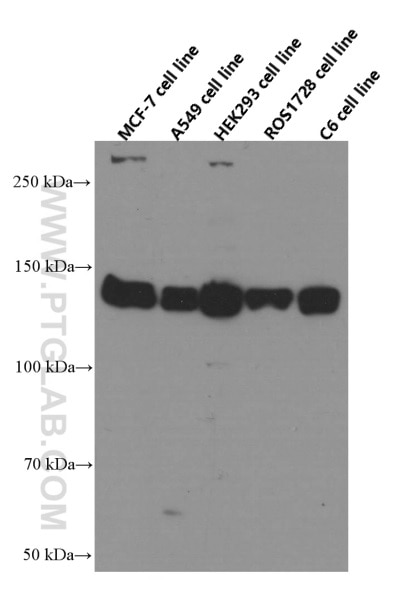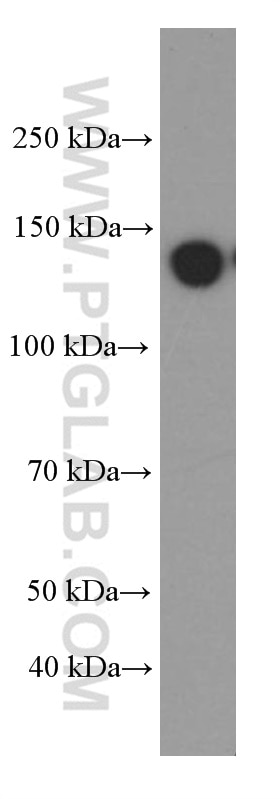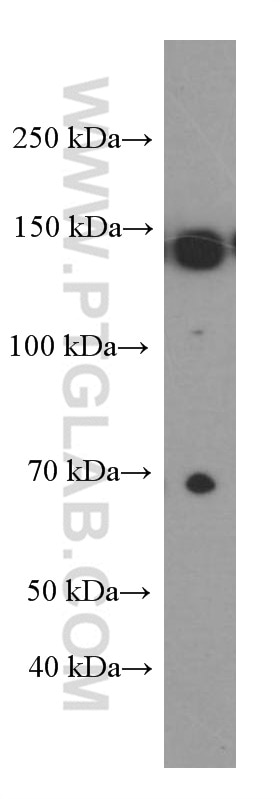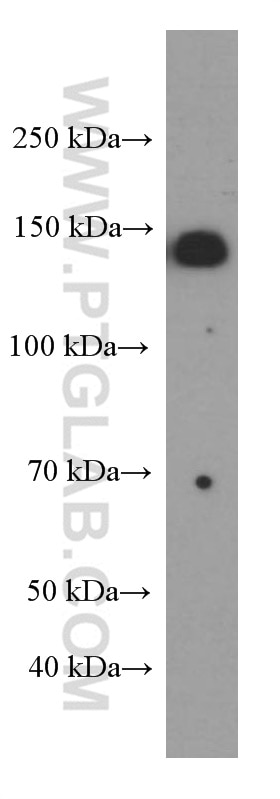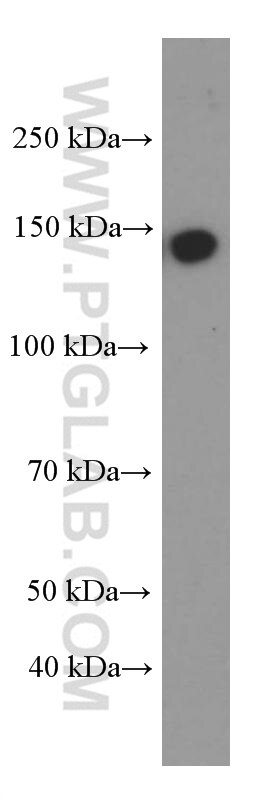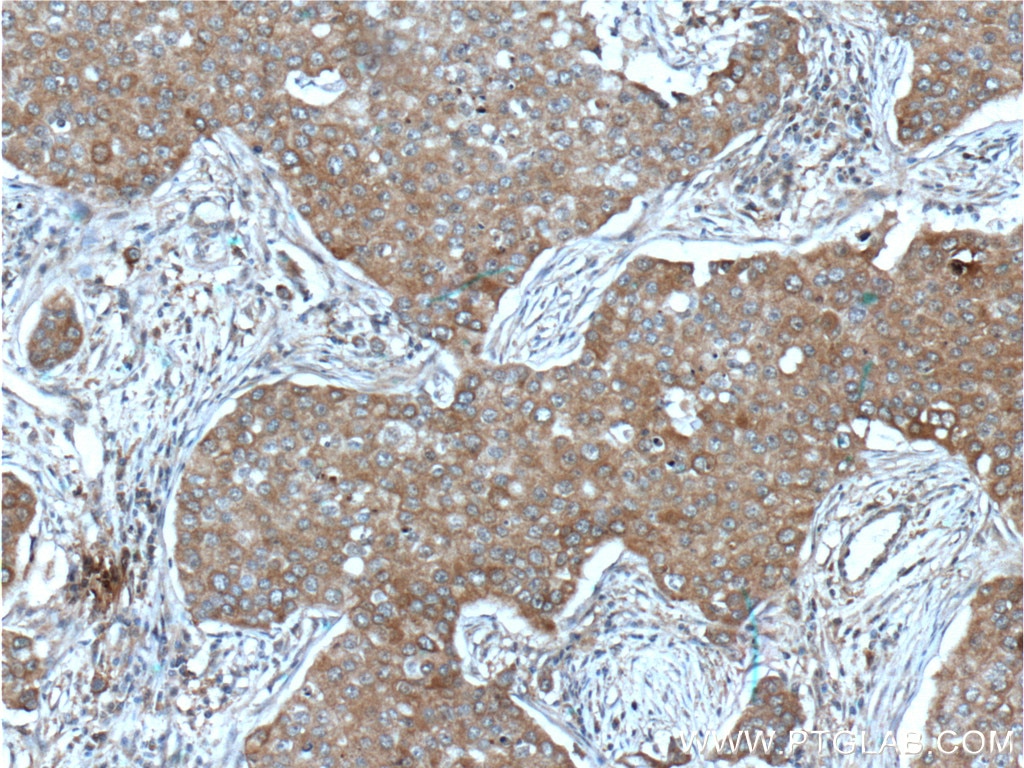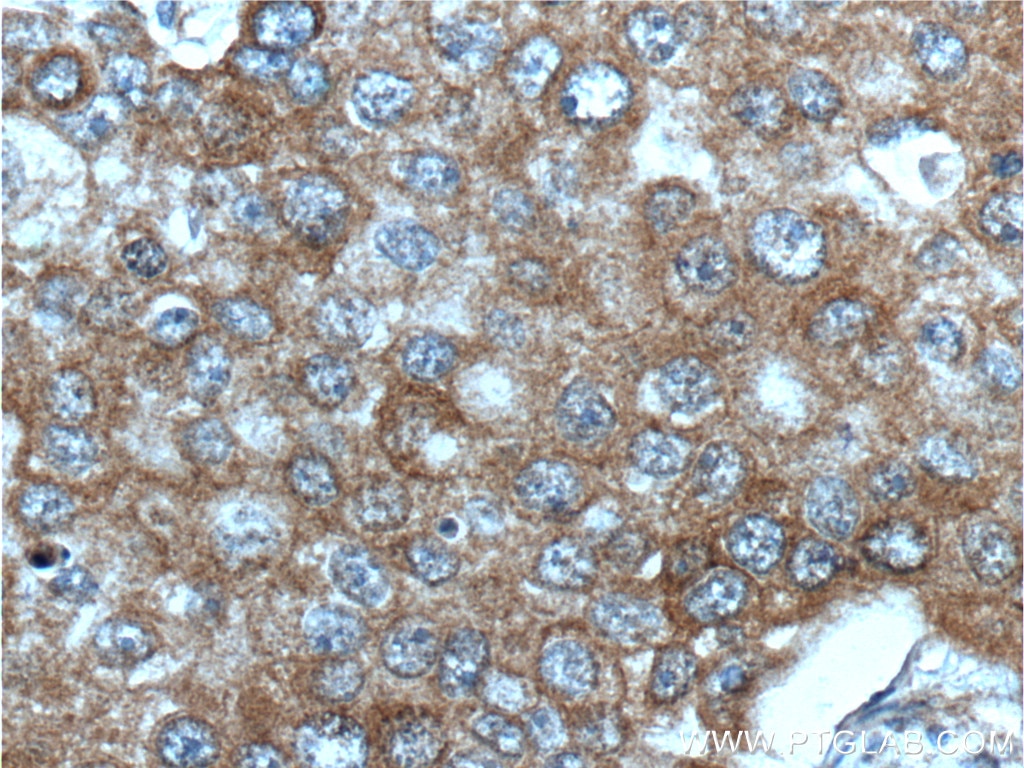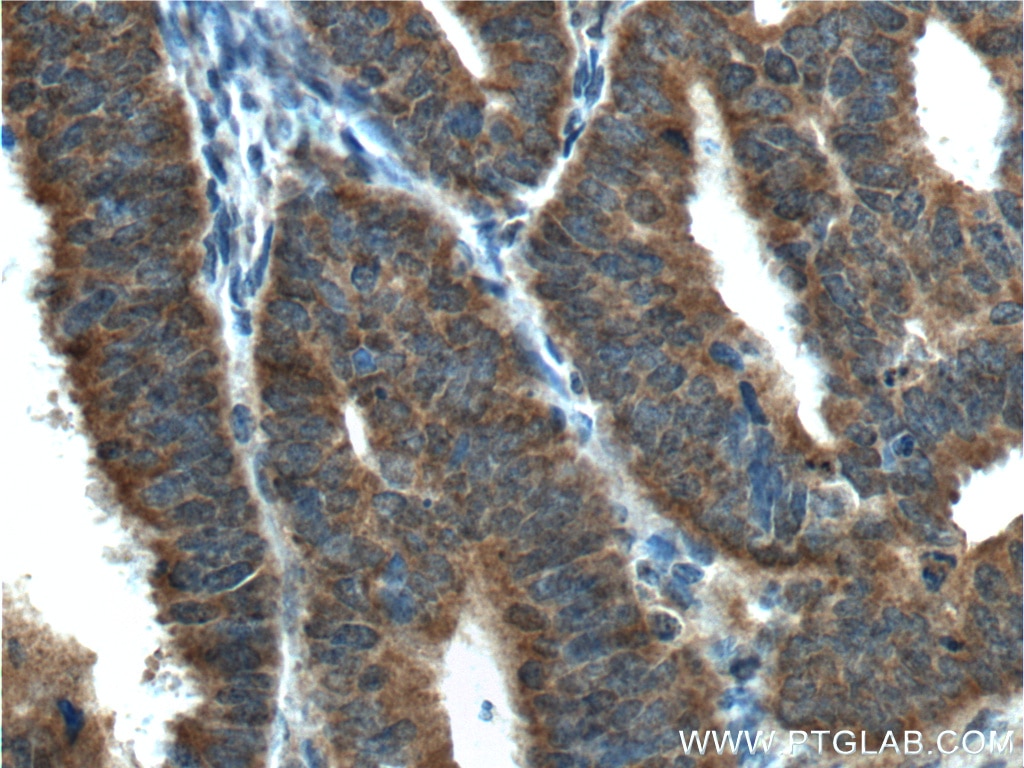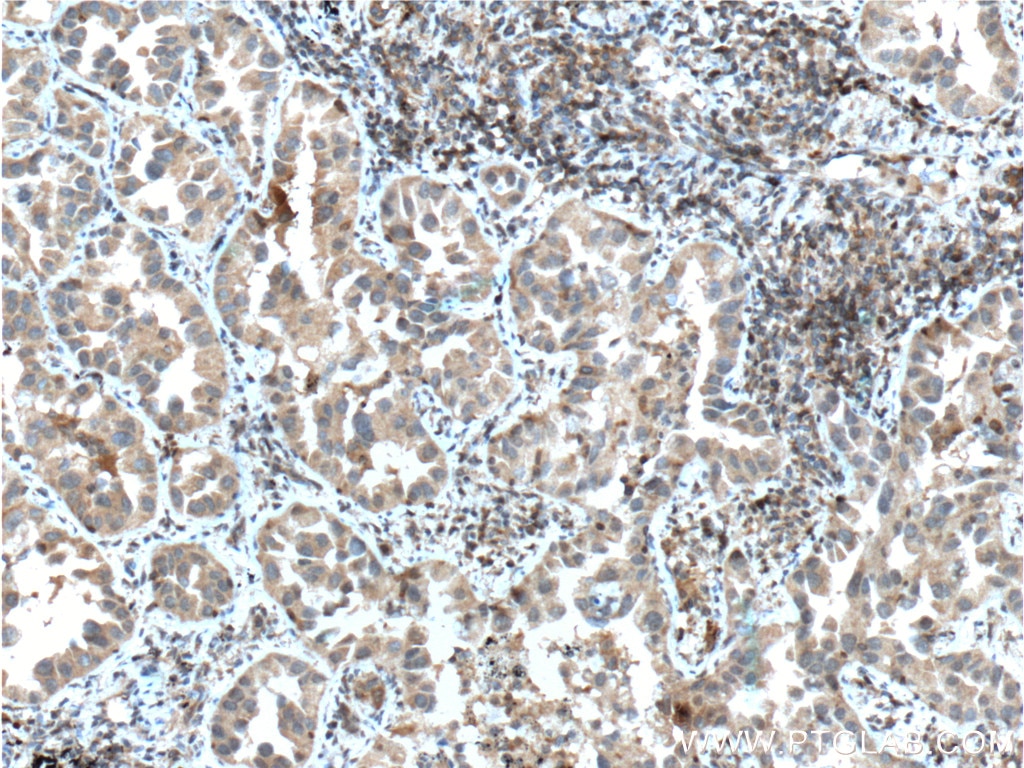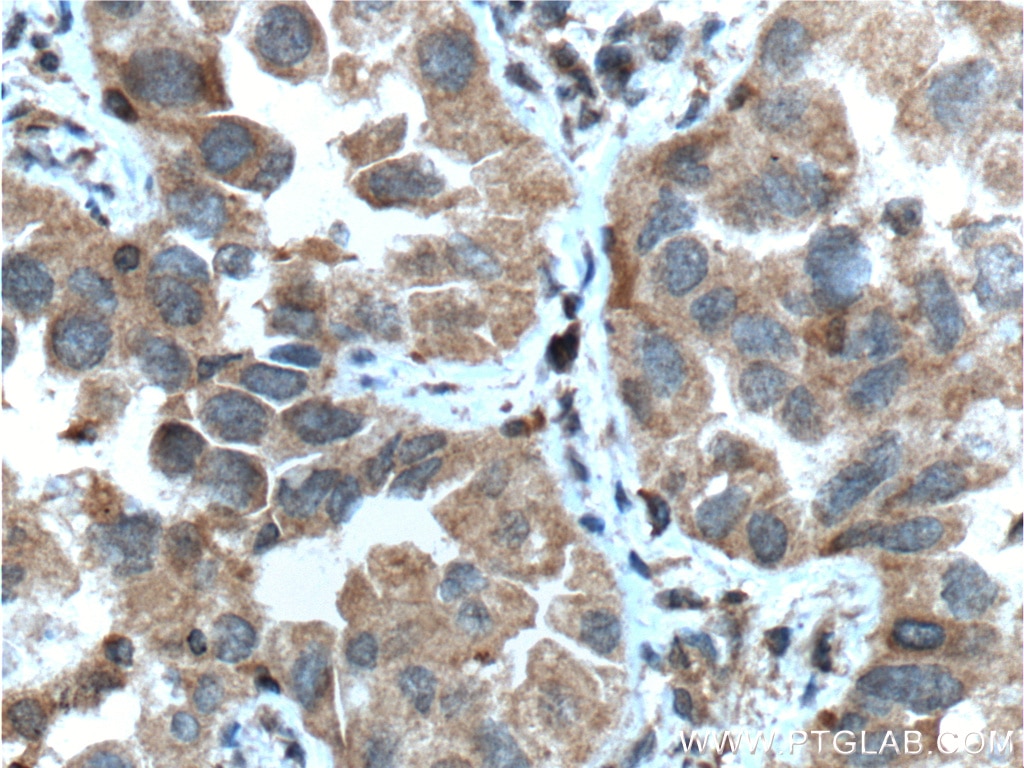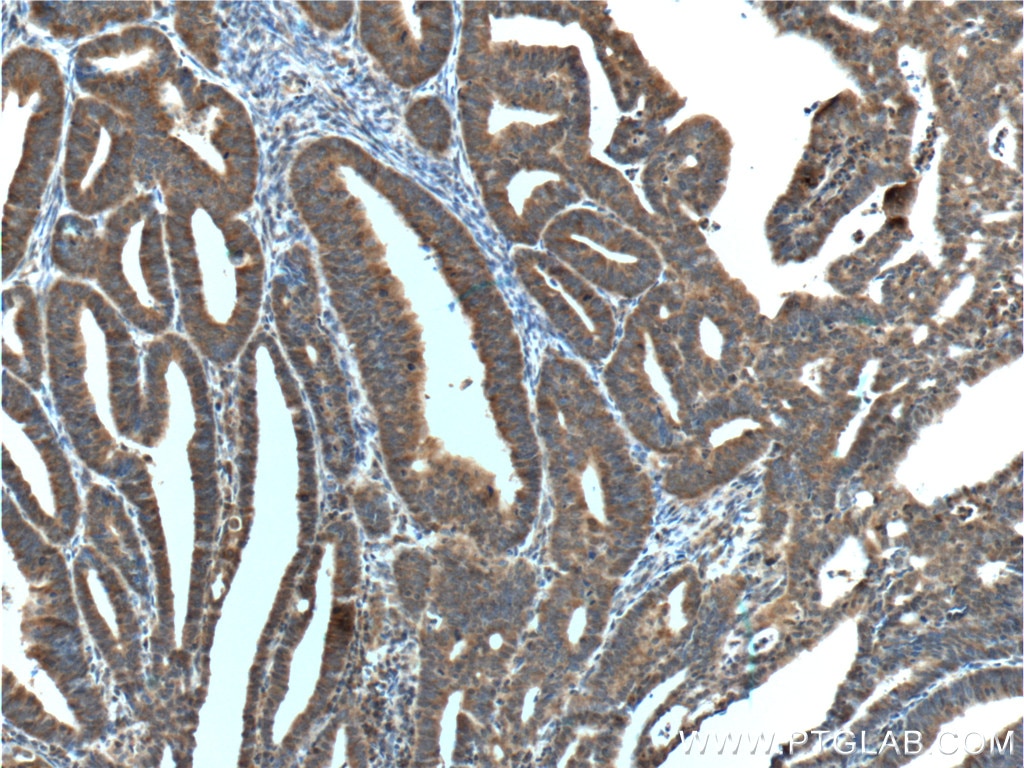Tested Applications
| Positive WB detected in | MCF-7 cells, HepG2 cells, HeLa cells, HUVEC cells, A549 cells, HEK-293 cells, ROS1728 cells, C6 cells |
| Positive IHC detected in | human breast cancer tissue, human endometrial cancer tissue, human lung cancer tissue Note: suggested antigen retrieval with TE buffer pH 9.0; (*) Alternatively, antigen retrieval may be performed with citrate buffer pH 6.0 |
Recommended dilution
| Application | Dilution |
|---|---|
| Western Blot (WB) | WB : 1:1000-1:8000 |
| Immunohistochemistry (IHC) | IHC : 1:50-1:500 |
| It is recommended that this reagent should be titrated in each testing system to obtain optimal results. | |
| Sample-dependent, Check data in validation data gallery. | |
Published Applications
| WB | See 5 publications below |
| IHC | See 1 publications below |
Product Information
66283-1-Ig targets IGF1R/CD221 in WB, IHC, ELISA applications and shows reactivity with human, rat samples.
| Tested Reactivity | human, rat |
| Cited Reactivity | human, mouse, rat |
| Host / Isotype | Mouse / IgG1 |
| Class | Monoclonal |
| Type | Antibody |
| Immunogen |
Peptide Predict reactive species |
| Full Name | IGF I receptor |
| Calculated Molecular Weight | 155 kDa |
| Observed Molecular Weight | 130-140 kDa |
| GenBank Accession Number | NM_000875 |
| Gene Symbol | IGF1R |
| Gene ID (NCBI) | 3480 |
| RRID | AB_2881666 |
| Conjugate | Unconjugated |
| Form | Liquid |
| Purification Method | Protein G purification |
| UNIPROT ID | P08069 |
| Storage Buffer | PBS with 0.02% sodium azide and 50% glycerol, pH 7.3. |
| Storage Conditions | Store at -20°C. Stable for one year after shipment. Aliquoting is unnecessary for -20oC storage. 20ul sizes contain 0.1% BSA. |
Background Information
IGF1R, also named as CD221, is a receptor tyrosine kinase which mediates actions of INS-like growth factor 1 (IGF1). IGF1R binds IGF1 with high affinity and IGF2 and INS with a lower affinity, the activated IGF1R is involved in cell growth and survival control. It is crucial for tumor transformation and survival of malignant cells. IGF1R is translated as ~220 kDa pro-receptors (PMID: 33969359). IGF1R is a heterotetrameric receptor, composed of two alpha subunits (~130 kDa) and two beta subunits (~100-120 kDa) (PMID: 6279656). Both the alpha and beta subunits are synthesized from a single mRNA precursor. The precursor is then glycosylated, proteolytically cleaved, and crosslinked by cysteine bonds.
Protocols
| Product Specific Protocols | |
|---|---|
| IHC protocol for IGF1R/CD221 antibody 66283-1-Ig | Download protocol |
| WB protocol for IGF1R/CD221 antibody 66283-1-Ig | Download protocol |
| Standard Protocols | |
|---|---|
| Click here to view our Standard Protocols |
Publications
| Species | Application | Title |
|---|---|---|
Thyroid A MULTICENTER, SINGLE-BLIND, CASE-CONTROL, IMMUNOHISTOCHEMICAL STUDY OF ORBITAL TISSUE IN THYROID EYE DISEASE | ||
Cell Signal Cell surface GRP78 facilitates hepatoma cells proliferation and migration by activating IGF-IR. | ||
Behav Brain Res Possible mechanisms of prenatal cold stress induced-anxiety-like behavior depression in offspring rats. | ||
Biosci Biotechnol Biochem Black rice bran intake reduces phosphorylated tau levels and enhances insulin signaling in the brain of aged normal mice | ||
Oncol Rep Macrophage renewal modes affect acquired resistance to gefitinib in EGFR‑mutant lung cancer PC‑9 cells | ||
Eur J Obstet Gynecol Reprod Biol Comprehensive assessment the expression of core elements related to IGFIR/PI3K pathway in granulosa cells of women with polycystic ovary syndrome. |

